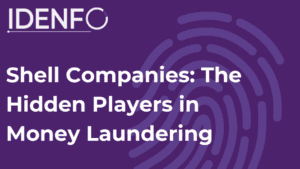In an era where regulatory compliance and risk management are more critical than ever, artificial intelligence (AI) is revolutionizing how organizations conduct adverse media screening. Adverse media screening involves monitoring news, social media, and other public sources for negative information related to individuals or businesses that could indicate financial crime, misconduct, or reputational risks. This article explores how AI enhances adverse media screening—from detecting risks to enabling informed decision-making—transforming compliance and risk management processes across industries.
The Growing Importance of Adverse Media Screening
Adverse media screening is essential for organizations, especially in financial services, to identify potential risks linked to customers, partners, or vendors. Regulatory bodies worldwide require businesses to conduct thorough background checks to comply with anti-money laundering (AML) and counter-terrorism financing (CTF) laws. Traditional manual screening methods struggle to keep pace with the vast and rapidly growing volume of media content. AI-powered screening addresses these challenges by automating data collection and analysis, enabling faster, more accurate risk detection.
How AI Transforms Adverse Media Screening
Automated Data Collection and Media Ingestion
AI systems automate the collection of vast amounts of unstructured data from diverse sources including news articles, social media, blogs, regulatory databases, and more. This automation allows organizations to cover a broader range of content in multiple languages, ensuring no critical information is missed.
Natural Language Processing (NLP) and Entity Recognition
NLP algorithms analyze and understand the meaning of text data, extracting relevant information even from complex or nuanced language. AI-powered entity recognition identifies individuals, companies, locations, and other key entities mentioned in media content, linking them accurately to the subject under review. This reduces false positives and enhances precision in screening results.
Pattern Recognition and Trend Analysis
Machine learning models detect patterns and trends within adverse media, such as recurring themes or emerging risks. This capability enables organizations to anticipate potential threats before they escalate. For example, AI can flag articles related to sanctions evasion or financial misconduct, helping compliance teams prioritize investigations.
Continuous Learning and Improvement
AI systems learn from previous screening outcomes, improving their ability to detect new types of adverse media and adapt to evolving regulatory requirements. This continuous learning process ensures that screening remains effective against emerging risks and sophisticated attempts to evade detection.
From Detection to Decision: Enhancing Risk Management
AI does not just detect adverse media; it supports decision-making by providing actionable insights.
Risk Scoring and Prioritization
AI platforms assign risk scores to flagged entities based on the severity and relevance of adverse media findings. This helps compliance teams prioritize high-risk cases, optimizing resource allocation and reducing investigation times.
Real-Time Monitoring and Alerts
Unlike traditional periodic screening, AI enables continuous, real-time monitoring of media sources. Organizations receive timely alerts on new adverse information, allowing them to respond swiftly to potential risks and maintain regulatory compliance.
Integration with Compliance Workflows
AI-driven adverse media screening tools integrate seamlessly with broader compliance systems, including customer onboarding and ongoing due diligence processes. This integration streamlines workflows, reduces manual effort, and enhances overall operational efficiency.
Generative AI Assistance
Advanced generative AI models assist compliance officers by providing interactive, chat-based investigations of flagged entities. These AI agents help analyze complex cases, gather additional context, and support informed decision-making, acting as a second line of defense.
Benefits of AI-Powered Adverse Media Screening
- Improved Accuracy: AI reduces false positives and negatives by analyzing context and language nuances more effectively than manual methods.
- Scalability: AI handles exponentially growing data volumes without compromising speed or quality.
- Cost Efficiency: Automation decreases the need for extensive human review, lowering operational costs.
- Regulatory Compliance: AI helps organizations meet stringent AML and risk management regulations by providing comprehensive and timely screening.
- Reputation Protection: Early detection of negative media enables proactive risk mitigation, safeguarding brand reputation.
Challenges and Considerations
While AI offers significant advantages, organizations must address challenges such as data privacy, algorithmic transparency, and potential biases in AI models. Ensuring explainability and compliance with data protection laws is critical to maintaining trust and regulatory approval.
Conclusion
AI has fundamentally transformed adverse media screening by automating detection, enhancing accuracy, and enabling smarter risk-based decisions. From ingesting vast media content to providing real-time alerts and generative AI support, these technologies empower organizations to stay ahead of emerging risks and regulatory demands. As regulatory landscapes evolve and data volumes continue to grow, AI-driven adverse media screening will remain indispensable for effective compliance and risk management.
Frequently Asked Questions (FAQ)
What is adverse media screening?
Adverse media screening is the process of monitoring news, social media, and other public sources for negative information related to individuals or organizations that may indicate risk or misconduct.
How does AI improve adverse media screening?
AI automates data collection, uses natural language processing to analyze unstructured text, recognizes entities accurately, detects patterns, and continuously learns to improve screening accuracy and efficiency.
Why is real-time monitoring important?
Real-time monitoring allows organizations to receive immediate alerts about new adverse information, enabling faster responses to potential risks and maintaining compliance.
Can AI reduce false positives in screening?
Yes, AI’s ability to understand context and language nuances significantly reduces false positives compared to manual or keyword-based screening methods
What role does generative AI play in adverse media screening?
Generative AI assists compliance teams by providing interactive investigations, helping analyze complex cases, and supporting informed decision-making as a second line of defense.









